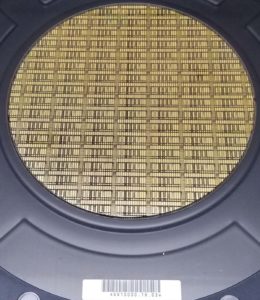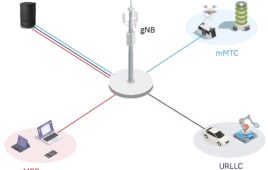NXP’s Chandler, Ariz. fab produces GaN devices used in power amplifiers across 5G frequencies, from low-band to mmWave. In this video 5G Technology Word spoke with NXP’s Paul Hart.
5G base stations need to transmit low-band, mid-band, and mmWave signals to user devices. As frequencies increase, so does the power needed to transmit over useful distances. Because of it’s high-frequency characteristics, gallium nitride (GaN), offers advantages over other processes for use in 5G base station power amplifiers. In September 2020, NXP Semiconductors opened a new fab dedicated to producing GaN transistors for 5G power amplifiers. In the video, 5G Technology World spoke with Paul Hart, executive vice president and GM of NXP’s Radio Power Group about the new Arizona fab and what GaN offers in terms of performance and efficiency.
At the Arizona fab, NXP manufactures GaN devices specifically for the 5G power amplifier market as opposed to applications such as power conversion. Hart said that GaN devices, while more difficult to manufacture and more expensive than silicon-based devices, outperform laterally diffused MOS(LDMOS). Part of the difficulty in manufacturing comes from the fact that a GaN device sits on top of a silicon carbide (SiC) substrate, which Hart said the two don’t want to be on the same lattice. “SiC is close to diamond,” said Hart. “It’s an excellent conductor of heat.” That’s important because heat is one place where 5G needs better efficiency. Hart explained that GaN is, therefore, used only where needed within the device. In other places, you might find LDMOS and SiGe. Figure 1 shows a GaN wafer produced at the NXP fab.
Because many PAs used in 5G will have to drive as many as 64 antenna elements with power ranging from 5 W to 60 W or 80 W, packaged devices need cooling. That’s why the packaged devices have copper to the bottom of the device. Designers will then need to pull heat away using copper coins or dense via arrays. Hart noted that power efficiency in GaN devices has increased from 38% to 52% in just two years, with 60% efficiency in sight. The greater efficiency means that PAs can shrink in size and weight, making them easier and less expensive to install and operate. That could make a difference on 5G private networks installed in factories and other facilities.






Tell Us What You Think!